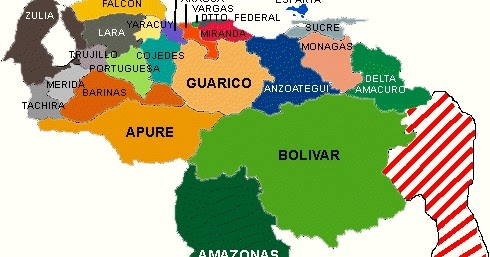by Adriana Nouel; edited by Meleena Mohammed
In Venezuela there are many aspects to this culture, from clothing to the way of speaking. We will talk a little about the languages spoken in my country. Since we all speak Spanish, the country is mostly monolingual, even though many people say that we do not all speak the same, it really depends on the state where you live. Venezuela has 24 states, some are Maracaibo and here, people speak Maracucho for example when they say “What do you want, what do you do, where do you work?” In Barinas they talk like gocho ”What are you doing, when are you going to go out with his mom” is with a little more respect, and just like these states, there are many more!
| State | Way they speak |
| Maracaibo | Maracucho |
| Barinas | Gocho |
Immigrants as well as Spanish speak their own languages: highlighting Arabic, Italian, Portuguese, English, Chinese, Galician, among others. Arabic is spoken mainly by the Lebanese and Syrian colonies on Margarita Island, Puerto la Cruz, Maracay and Caracas; the Caraqueño man is spoken in Santa Elena de Uairén state (Bolívar) by a good part of the population, given its proximity to Bolívar, while part of the population of Colonia Tovar (Aragua) speaks a dialect of German, called (German colonist ). For its part, the English language is widespread due to the influence of American immigrants (mainly motivated to oil exploitation).

Religion
As for religion, most of us are Catholics, the rest are ascribed to Protestant denominations, and other religions. Christian Catholics have a culture of going to church every Sunday morning to pray and ask the Lord Jesus Christ for health and well-being!

Typical foods of Venezuela
Each region of Venezuela is identified by its own customs and expressions, rich and diverse original dishes, vary according to the geographical situation of each region, and according to the way of life of its inhabitants.
Here are some of those typical foods of Venezuela:
Culture and Celebrations
In Venezuela, we have many cultures but among them we can also observe the crafts that are part of it; plastic arts, gastronomy and Venezuelan music. In music and dance we have bachata, salsa, merengue, vallenato (it’s from Colombia and from a state of Venezuela), we have the bagpipes that are used regularly in December as Christmas comes and the arrival of the boy Jesus and the new year.
In literature, we have many famous writers who have written stories based on real echos. Concerning science and technology, Venezuela has counted on several scientists who have made a notable contribution to the natural and medical sciences, as well as technological progress.
And of course, we have the festivities that of the 365 days of the year, there is usually the day of something, for example: January 1 New year, January 6 is the day of Epiphany and day of the Three Kings well known as (Day of Reyes), January 14th Day of the Divine Shepherd (is normally celebrated in Barquisimeto in State Lara), January 15th Teacher’s Day, February or March we celebrate Carnival throughout the country, along with many more festivities.
We have many sports but the most played in Venezuela are; baseball and soccer and unsurprisingly, are the most popular. Basketball is also popular and among others, like individual sports, the most prominent Venezuela being boxing, along with a wide fanaticada. The country has projected to be great pugilists at an international level. Venezuela in the Olympic Games has historically stood out in sports such as athletics, boxing, weightlifting, cycling, taekwondo and fencing.
Sources:
https://en.wikipedia.org/wiki/Culture_of_Venezuela






Comments
2 responses to “Venezuelan Student’s Look Inside Venezuelan Culture”
The picture for hallacas aren’t hallacas. They look like empanadas. These are traditional hallacas: https://media.pri.org/s3fs-public/styles/story_main/public/story/images/RTX20L2O.jpg?itok=dmdY5R7c
Thank you! So sorry, that was a mistake on our writer’s part, we have changed it now.